K-1
K-1 is a martial arts organization and martial arts brand established in 1993, well known worldwide mainly for its kickboxing heavyweight division fights and tournaments ("Grand Prix" or "GP").[1] In January 2012, K-1 Global Holdings Limited, a company registered in Hong Kong, acquired the rights to K-1, and is the current organizer of K-1 events worldwide.
 | |
| Type | Private |
|---|---|
| Industry | Martial-arts entertainment planning and promotion |
| Founded | 1993 |
| Founders | Kazuyoshi Ishii |
| Headquarters | |
Key people | Amanda Yang, Director Management & Administration
Alin Hălmăgean, Director Operations |
| Owner | K-1 Global Holdings Limited |
| Website | K-1 World GP |
Founded in 1993 by karateka Kazuyoshi Ishii, at its height in the late 90s and the 2000s under the ownership of the Fighting and Entertainment Group (FEG), K-1 was the largest and most prestigious "Kickboxing" organization in the world. With thousands of fighters and watched by millions of fans around the world.[2] K-1 also promoted Mixed Martial Arts events, with some events having both kickboxing and MMA matches on their cards (such as their Dynamite!! series). However, since 2010 K-1 started to lose its status of top organization, as FEG started to have financial issues, not begin able to organize big events or pay huge prize money, eventually going bankrupt,[3] and successor holding companies have been unable to maintain events the same level of size during the FEG years.
The letter K in K-1 is officially designated as a representation of words karate, kickboxing and kung fu. Nevertheless, some reports suggest that it represents the initial K found in competing disciplines such as karate, kickboxing, kung fu, kempo, kakutougi (the generic Japanese term for "combat sports"), and [tae] kwon do.[4] Yet another theory claims that the K simply comes from kakutougi and the "1" component pertains to the single weight division (in earlier competition) and the champion's unique position.[5] Nevertheless, the promotion held several tournaments under K-2 and K-3 banners from 1993 to 1995.
K-1 has its own unique ruleset (known as "Oriental Rules" or simply "K-1 Rules"), and due the promotion's popularity, it is also referred as "Unified Rules"[6] as it has been adopted by other top kickboxing organizations such as Glory, ONE Championship and Bellator Kickboxing.[7][8][9] And kickboxing governing bodies such as the ISKA and WKN have also crowned their own "K-1 rules" champions.[10][11] As such "K-1" is also referred as a style of Kickboxing and sometimes is erroneously considered as a standalone martial arts/combat sport.[2]
History
K-1's predecessor Seidokaikan Karate was formed in 1980 by Kazuyoshi Ishii, a former Kyokushin karate practitioner who had formed his own organization to help promote the best stand-up martial artists.[12] Seidokaikan arranged several successful challenge events against other martial arts organizations, originally using rules based on the Kyokushin Knockdown karate rules, but gradually adapting and changing closer to kickboxing rules. In 1993, Mr. Ishii founded the K-1 organization exclusively as a kickboxing organization, closely cooperating with, but independent from Seidokaikan.[5]
Financial problems
Starting in 2010, multiple stories began to surface regarding the financial troubles of K-1 and their parent company FEG.[13] Simon Rutz, the owner of the Dutch-based kickboxing promotion It's Showtime, claimed in January 2011 that some fighters from It's Showtime had not been paid for fights in K-1.[14]
In early 2011, FEG publicly announced that they were facing financial problems and that the organization would take some months off to restructure. Many fighters and managers spoke out against FEG due to unpaid fight purses and objections to the direction that its owner was taking K-1. It appeared that financial problems were severe, and that FEG could potentially lose ownership of K-1.[15]
The entire K-1 brand, along with most of its trademarks, with the exception of, 'K-1 Koshien', 'K-1 MAX' and 'Dream', were sold to Japanese real estate firm, Barbizon Corporation Limited, on July 28, 2011.[16]
On February 1, 2012, EMCOM Entertainment Inc. purchased K-1 from Barbizon.[17]
K-1 Global
In March 2012, It's Showtime announced that EMCOM Entertainment established a new company K-1 Global Holdings Ltd. in Hong Kong. K-1 Global Holdings, Ltd., became the new official owner of the K-1 brand. K-1 Global's agreement with promotion required that certain fighters signed under It's Showtime appear in upcoming K-1 Global events.[18]
A number of events were already planned and scheduled for the 2012 calendar before new K-1 ownership took complete control of the company. It's Showtime was the promoter of the first event presented by K-1 Global Holdings Ltd., the K-1 World MAX Final 16. It took place on May 27, 2012, at the Palacio Vistalegre in Madrid, Spain.
After the event, controversy and rumors circulated over the fact that once again, fighters were not paid for their performances. Problems were compounded due to unpaid financial obligations of FEG, and the complete transfer of ownership of the K-1 name was not yet complete. As a result, the K-1 World Grand Prix scheduled for 2012 would be cancelled if these issues were not resolved.[19]
Ultimately, K-1 Global Holdings, Ltd. was blamed for the failure of an event they did not promote. They were also accused of not paying fighters when in fact, the promoter and FEG shared responsibilities in ensuring fighters were paid. The Chairman of the new K-1 resolved the matter by paying fighters what was owed and including a 50% bonus.[20]
It was announced in June 2012 that It's Showtime was purchased by Glory Sports International, eventually to be merged in their new promotion GLORY.[21]
On August 10, 2012, K-1's co-promotion agreement with Romanian-based kickboxing promotion SUPERKOMBAT was announced.[22] Eventually it was ended. Early 2013 SK president Eduard Irimia stated that its company will be independent in 2013 but will still continue to have cooperation with any interested promotion including K-1 by offering fighters.[23]
K-1 World GP
Following the bankruptcy of K-1 Global, the rights to the K-1 brand were acquired by EMCOM Holdings under a subsidiary company called "K-1 Global Holdings Limited", which was founded in Hong Kong in August 2011.[24]
On May 29, 2014, the launch of a K-1 World League was announced. K-1 World League acquired naming rights and exclusive license for the Japanese region from K-1 Global Holding Ltd.[25] "K-1 World League" was subsequently renamed "K-1 World GP" on September 24, 2014.[26]
After its formation, "K-1 World League" formally incorporated the KRUSH.[25] Launched prior to the death of FEG, in 2009, Krush was a collaboration between K-1 and AJKF. It was seen at the time as the second tier of K-1 competition,[27] and produced a number of future K-1 fighters such as Takeru Segawa, Tatsuya Tsubakihara and Leona Pettas, among others. K-1 would later add the KHAOS brand as well, which is seen as the third tier of competition, as a stepping stone between amateur and professional competition. K-1 maintains a number of gyms throughout Japan, from which potential kickboxers can transition from training to amateur competition to professional competition. A fighter can viably spend their entire career under the K-1 umbrella.[28]
On January 26, 2019, Krush was renamed "K-1 KRUSH FIGHT" to further announce the connection between the two brands.[29] However, on December 7, 2019, it was renamed back to Krush. The aim of renaming the competition back to Krush was to dispel the image of the brand as the second tier of K-1.[30]
On September 20, 2016, "K-1 World GP" executive producer Kensaku Maeda retired,[31] and was subsequently replaced by the Krush executive producer Mitsuru Miyata.[32]
From June 2017 onward, "K-1 World GP" started once again started holding events at the Saitama Super Arena. It was further revealed that fighters were signed exclusively to K-1, which wasn't the case previously.[33]
On December 17, 2018, it was announced that the former Krush and K-1 commentator and martial arts writer Takumi Nakamura would replace Mitsuru Miyata as the executive producer.[34]
Rules
K-1 rules are as follows:[35][36]
- The fights are contested in a ring which is six or more square meters and surrounded by four ropes.
- Only striking techniques such as punches, kicks and knees are allowed. Strikes with the back of the fist are allowed, but not with the elbow or the forearm. Multiple clinch knees are prohibited.
- Sweeps, throws, headbutts and strikes with the elbow are prohibited. Furthermore, spitting, biting, groin strikes, strikes to the back of the head, striking after the round has ended or the referee has called for a break, striking while the opponent is knocked down and excessive holding are all considered fouls.
- Matches, both regular and title matches, are contested in three three-minute rounds. In case of a draw, an extension round is fought.
- Matches are scored based on four criteria:
- (1) Number of knockdowns a fighter has scored, with three knockdowns inside of a single round resulting in a technical knockout
- (2) Presence or absence of damage to the opponent
- (3) The number clean strikes, with strikes which are thrown with fight ending intention scoring more highly than those thrown with the intent of racking up points
- (4) Aggressiveness
List of K-1 events
In the past every year there were dozens of other K-1 qualifying tournaments and preliminaries held around the world.
K-1 has held events in many countries around the world.
The following is a list of countries that K-1 has held events in chronological order:
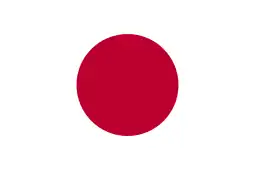 Japan (1993–2012, 2014–2020)
Japan (1993–2012, 2014–2020) Netherlands (1994, 2001–2003, 2006–2010)
Netherlands (1994, 2001–2003, 2006–2010) France (1995, 2002–2008, 2010)
France (1995, 2002–2008, 2010) Switzerland (1995–2000, 2003, 2017)
Switzerland (1995–2000, 2003, 2017) United States (1998, 2000–2008, 2012)
United States (1998, 2000–2008, 2012).svg.png.webp) Australia (2000–2005, 2010)
Australia (2000–2005, 2010) England (2000, 2002–2004, 2006–2007, 2013)
England (2000, 2002–2004, 2006–2007, 2013) Italy (2000–2008)
Italy (2000–2008) Germany (2000–2008)
Germany (2000–2008) Belarus (2000, 2010)
Belarus (2000, 2010)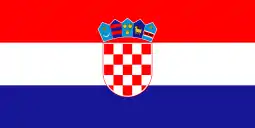 Croatia (2000, 2002, 2007, 2009–2010, 2013)
Croatia (2000, 2002, 2007, 2009–2010, 2013) South Africa (2000–2002, 2006)
South Africa (2000–2002, 2006) New Zealand (2000–2006)
New Zealand (2000–2006) Czech Republic (2000–2001, 2006–2009)
Czech Republic (2000–2001, 2006–2009) Denmark (2001)
Denmark (2001)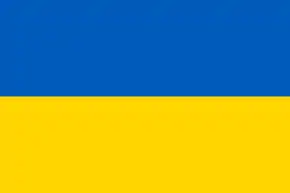 Ukraine (2001–2002, 2006, 2010)
Ukraine (2001–2002, 2006, 2010) Spain (2002–2004, 2005–2006, 2012–2014)
Spain (2002–2004, 2005–2006, 2012–2014)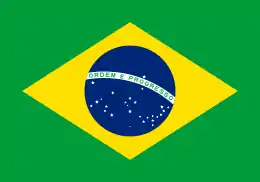 Brazil (2002–2006, 2013)
Brazil (2002–2006, 2013) Sweden (2003–2010)
Sweden (2003–2010) Russia (2003, 2006, 2010)
Russia (2003, 2006, 2010) Bosnia and Herzegovina (2003–2004, 2009, 2016)
Bosnia and Herzegovina (2003–2004, 2009, 2016) Scotland (2004)
Scotland (2004)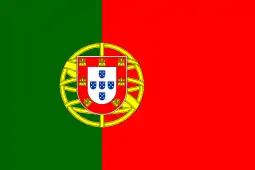 Portugal (2004, 2006, 2013)
Portugal (2004, 2006, 2013) Poland (2004, 2007–2010)
Poland (2004, 2007–2010)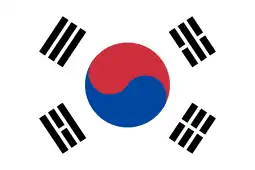 South Korea (2004–2010, 2013)
South Korea (2004–2010, 2013) Slovenia (2005–2006, 2008)
Slovenia (2005–2006, 2008) Hungary (2005–2010)
Hungary (2005–2010)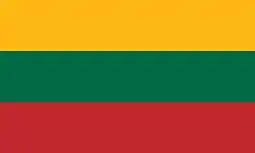 Lithuania (2006–2007, 2010, 2013)
Lithuania (2006–2007, 2010, 2013) Latvia (2006–2008)
Latvia (2006–2008) Turkey (2007, 2010)
Turkey (2007, 2010).svg.png.webp) Belgium (2007)
Belgium (2007) Estonia (2007, 2009)
Estonia (2007, 2009) Romania (2007, 2009–2010)
Romania (2007, 2009–2010) Hong Kong (2007)
Hong Kong (2007) Austria (2008)
Austria (2008) Taiwan (2008)
Taiwan (2008) Moldova (2009–2010, 2013)
Moldova (2009–2010, 2013) China (2013-2015)
China (2013-2015)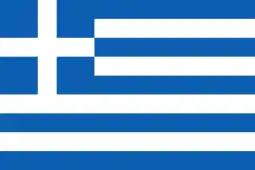 Greece (2012)
Greece (2012).svg.png.webp) Canada (2013)
Canada (2013) Ireland (2013)
Ireland (2013) Azerbaijan (2014)
Azerbaijan (2014)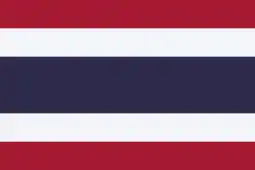 Thailand (2014)
Thailand (2014) Serbia (2016)
Serbia (2016)
Tournament format

K-1 Grand Prix
Original K-1 Grand Prix was a single event tournament held in Japan where competitors participated on invitation. By 1998, K-1 introduced the K-1 World Grand Prix format composed of K-1 Regional Elimination Tournaments (theoretically amounting to six), which qualify fighters for the K-1 World Grand Prix Final, along with licensed K-1 Fighting Network events designed to hold national preliminaries for regional qualification. However, given the fact that K-1's popularity differs greatly among six K-1 regions, which may limit the number of actual elimination tournaments or change locations. For example, K-1 attempted to gain popularity in the United States by holding two GPs, however only a few Americans have ever qualified for the Finals. In 2006 one of the American GPs was relocated to Auckland. Additionally the K-1 Paris GP lost its qualifying right in favor of Amsterdam. Eventually Amsterdam lost it in favor of Łódź, and then Łódź in favor of Bucharest.
K-1 World Grand Prix Final Eliminator ("Final 16") is an event where 16 participants compete for the final eight spots in the Final ("Final 8"). Eight participants from the Final Eliminator meet at the K-1 World Grand Prix Final. Lesser elements in the tournament format have been significantly modified in years. The final was held at Tokyo Dome from 1997 to 2006. The 2012 final took place for the first time in history outside Japan, in Zagreb, Croatia.
K-1 World MAX and other
By 2002, K-1 started the K-1 World MAX ("Middleweight Artistic Xtreme") tournament for 70 kg (154 lb) Middleweight division, following a similar scheme to K-1 World Grand Prix (with theoretically four regional eliminators). In 2007, K-1 introduced two new title belts separate from K-1 World GP Champions, Super Heavyweight World Title for fighters over 100 kg/220 lbs and Heavyweight World Title for fighters under 100 kg/156–220 lbs.
Broadcast
K-1 events have been shown on the Tokyo Broadcasting System and Fuji TV.[37] Following the reformation of K-1 under "K-1 World GP", it bounced between several different broadcasters such as GAORA SPORTS, BS Sky PerfecTV! and TV TOKYO.[38] K-1 events are currently being broadcast by Abema TV.[39]
Internationally, K-1 has been seen on XTM in South Korea , Combate and SporTV in Brazil , HDNet Fights[40] in the United States, and on Eurosport in Europe.
K-1 Japan Group also operates a YouTube channel where fights, press conferences, and general media is uploaded.[41]
List of K-1 champions
Current K-1 champions
| Division | Champion | Since | Title defences |
|---|---|---|---|
| Heavyweight (-100 kg) | 2018 | 1 | |
| Cruiserweight (-90 kg) | 2021 | 0 | |
| Super Welterweight (-70 kg) | 2021 | 0 | |
| Welterweight (-67.5 kg) | 2021 | 0 | |
| Super Lightweight (-65 kg) | 2022 | 0 | |
| Lightweight (-62.5 kg) | 2021 | 0 | |
| Super Featherweight (-60 kg) | 2017 | 2 | |
| Featherweight (-57.5 kg) | 2021 | 0 | |
| Super Bantamweight (-55 kg) | 2022 | 0 | |
| Women's Flyweight (-50 kg) | 2019 | 0 | |
See also
References
- "Black Belt". Books.google.co.uk. August 2002. Retrieved 2016-02-20.
- "K1 Kickboxing | What Is K1 Kickboxing? | K-1 Rules Kickboxing". Sidekick Boxing. 2020-09-12. Retrieved 2022-01-01.
- Coffeen, Fraser (2011-12-25). "2011 The Year in MMA: The Death of the K-1 Grand Prix". Bloody Elbow. Retrieved 2022-01-01.
- Tashiro, H., & Tyrangiel, J. (2001): Turning the martial arts into mondo mayhem TIME (September 3, 2001). Retrieved on March 4, 2010.
- Maylam, J. (2001): K-1 hits the spot: Ultimate fighters pack a punch The Japan Times (October 21, 2001). Retrieved on March 4, 2010.
- "Unified Rules of Professional Kickboxing – Association of Boxing Commissions". www.abcboxing.com. Retrieved 2021-12-31.
- "Rules". Glory Kickboxing. Retrieved 2020-08-16.
- "ONE Championship's Super Series debuts on Friday | BusinessWorld". 2020-08-16. Archived from the original on 2020-08-16. Retrieved 2020-08-16.
- "Bellator Kickboxing's Weight Classes & Rule Set Revealed". Full Contact Fighter. Retrieved 26 August 2020.
- Network, World Kickboxing. "Kickboxing K-1 Rules World Champions". WKN. Retrieved 2022-01-01.
- "Kickboxing Champions – ISKA World Headquarters". Retrieved 2022-01-01.
- "K-1 | FIGHT! Magazine – Archives". fightmagazine.com. Retrieved 2014-04-06.
- "The Showtime May Arena event would possibly be delayed, due to K-1's financial problems" Archived 2011-01-24 at the Wayback Machine, January 21, 2011, Sports Navi – Yahoo! Japan (in Japanese)
- "What is happening with K-1!? It's Showtime owner Rutz talks about the rumor (1/2)" Archived 2012-09-30 at the Wayback Machine, January 21, 2011, Sports Navi – Yahoo! Japan (in Japanese)
- "K-1 could be purchased after a financial problem!? Like Pride?", January 23, 2011, Livedoor Sports (in Japanese)
- "K-1 Sold to Japanese Real Estate Firm Barbizon", July 28, 2011, MMAFighting
- K-1 announces agreement with SuperKombat, February 1, 2012, Liver Kick
- It's Showtime Closes Deal with the New K-1 Organization, March 6, 2012, It's Showtime
- Simon Rutz: "K-1 World Grand Prix Canceled, FEG 'Technically Bankrupt", October 17, 2011, Mmafighting.com
- "Daniel Ghita gives us insight into K-1's future and a fragmented kickboxing world". Liverkick.com. Archived from the original on 2016-01-07. Retrieved 2015-10-29.
- http://www.gloryworldseries.com/en/news%2F28-glory-world-series-acquires-kickboxing-competitor-it-s-showtime Archived September 6, 2012, at the Wayback Machine
- K-1 announces agreement with SuperKombat, August 10, 2012, Liverkick.com
- Liverkick's Exclusive Interview with Superkombat President Eduard Irimia, February 19, 2013, Liverkick.com
- "当社子会社による、K-1 Global Holdings Limited の株式取得(子会社化)および新規事業(MOBILE, ONLINE IT エンタテインメント事業)参入に伴う債権譲渡契約書締結に関するお知らせ" (PDF). hd.emcom.jp. Retrieved 3 June 2021.
- "新生K-1「K-1ワールドリーグ」発足 11.3代々木競技場第二体育館で旗揚げ". sportsnavi.yahoo.co.jp. Retrieved 3 June 2021.
- "新生K1、「ワールドGP」に大会名変更". nikkansports.com. Retrieved 3 June 2021.
- "【K-1】K-1 WORLD LEAGUEとして11月に旗揚げ戦". efight.jp. Retrieved 3 June 2021.
- "Takeru vs. Leona: Parallel Lives". thefight-site.com. Retrieved 3 June 2021.
- "2019年4月より「Krush」・「KHAOS」が「K-1 KRUSH FIGHT」・「K-1 KHAOS NIGHT」に名称変更". k-1.co.jp. Retrieved 3 June 2021.
- "2020年1月より「Krush」「KHAOS」に名称を戻し、創成期のロゴも復活!「Krush・KHAOSはK-1の下ではなく、K-1と並ぶ、K-1とは違う魅力を持ったイベント。それぞれの原点に立ち還る」(中村P)". k-1.co.jp. Retrieved 3 June 2021.
- "【K-1】前田憲作プロデューサーが退任". efight.jp. Retrieved 3 June 2021.
- "K1の宮田充が退任した理由と新プロデューサー中村拓巳で何が変わる|格闘女子の毎日キック". kakutougi2017.com. Retrieved 3 June 2021.
- "武尊vs那須川天心「夢の対決」が6月東京ドームで実現へ!". news.yahoo.co.jp. Retrieved 3 June 2021.
- "K-1解説者・中村拓己氏が新K-1プロデューサー就任「今までの方針を受け継ぎつつ、新しいことにも挑戦したい」". boutreview.com. 17 December 2018. Retrieved 3 June 2021.
- "K-1WGP公式ルール". k-1.co.jp. Retrieved 3 June 2021.
- "【K-1】判定基準を変更「K-1はKOを狙って戦う競技。倒しに行く姿勢をより評価して判定していきたい」". gonkaku.jp. Retrieved 3 June 2021.
- "Bad Left Hook, Global Boxing News and Commentary". Headkicklegend.com. Retrieved 2014-04-06.
- "K-1 WORLD GP 2015 IN JAPAN ~SURVIVAL WARS~". bs-sptv.com. Retrieved 3 June 2021.
- "K-1特別番組". abema.tv. Retrieved 3 June 2021.
- http://www.sherdog.com/news/press%20releases/k-1-to-air-on-hdnet-15257 Archived October 29, 2009, at the Wayback Machine
- https://www.youtube.com/user/k1WorldLeague